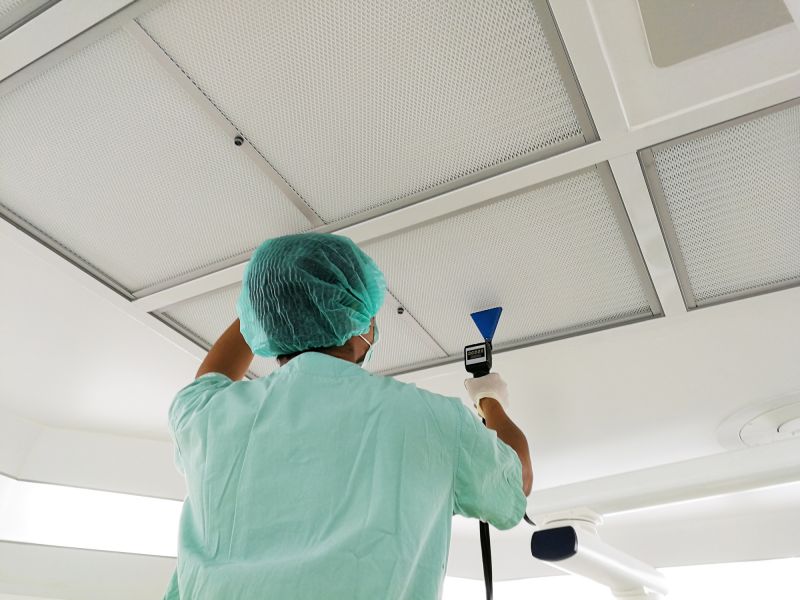Popular Duct Leakage Test Equipment for Professionals and DIYers
Discover reliable testing solutions that help identify duct leaks quickly and ensure optimal airflow in your building.
 Duct leakage testing is an essential process for assessing the integrity of duct systems in residential, commercial, and industrial settings. Proper testing helps identify areas where air may escape, which can impact energy efficiency, indoor air quality, and system performance. Various tools and devices are available to facilitate these tests, ranging from simple smoke pencils to advanced blower door systems. Selecting the right products depends on the scope of the testing, budget, and specific requirements of the project.
Duct leakage testing is an essential process for assessing the integrity of duct systems in residential, commercial, and industrial settings. Proper testing helps identify areas where air may escape, which can impact energy efficiency, indoor air quality, and system performance. Various tools and devices are available to facilitate these tests, ranging from simple smoke pencils to advanced blower door systems. Selecting the right products depends on the scope of the testing, budget, and specific requirements of the project.
Top Overall Option
Multi-Function Duct Testing Kit
This versatile testing kit combines a digital pressure gauge, airflow measurement tools, and visual inspection accessories, making it suitable for both DIY projects and professional assessments. Its user-friendly interface and comprehensive features facilitate accurate detection of duct leaks and system performance evaluation.
Types of Products For Duct Leakage Testings
Digital Pressure Meters
Devices that measure pressure differences within duct systems to identify leaks and assess system integrity.
Anemometers
Tools used to measure airflow velocity, helping to detect areas of high or low airflow indicating leaks.
Smoke Generators
Portable devices that produce visible smoke to visualize airflow paths and locate leaks.
Blower Door Systems
Advanced setups that pressurize or depressurize entire buildings or duct systems for comprehensive leakage testing.
Leak Detection Spray
Aerosol sprays that highlight leaks when applied to duct joints or seams, making leaks easier to pinpoint.
Infrared Thermometers
Temperature measurement tools that can detect temperature differences caused by air leaks in ducts.
Flow Capture Hoods
Devices that capture and measure airflow directly from vents and registers to assess leakage.
Ultrasonic Leak Detectors
Devices that detect ultrasonic sound waves produced by leaks, useful in noisy environments.
Visual Inspection Mirrors
Extended mirrors that help inspect hard-to-reach duct joints and seams for visible leaks or damage.
Pressure Pan Devices
Tools used to measure pressure differences at duct joints to locate leaks precisely.
Popular Choices
Widely used for measuring pressure in duct systems, offering quick and accurate readings.
Portable smoke devices that help visualize airflow leaks in ducts and vents.
Popular tools for measuring airflow velocity and volume to detect irregularities.
Affordable sprays used to highlight leaks at duct joints and seams.
Commonly used to identify temperature anomalies caused by leaks in duct systems.
Popular for detecting leaks through ultrasonic sound wave analysis, especially in noisy environments.
Effective for measuring airflow directly from vents, aiding in leak detection.
Setups that include pressure gauges and accessories for conducting comprehensive leakage tests.
Useful for visually inspecting hard-to-reach duct joints for visible leaks or damage.
All-in-one tools that combine multiple measurement functions for thorough testing.
Accurate duct testing often involves pressurizing or depressurizing the duct system and measuring airflow or pressure differences. This process can be performed with specialized equipment designed to detect leaks, measure airflow rates, and visualize airflow patterns. Many modern testing tools incorporate digital displays, data logging, and compatibility with other building analysis systems, making them versatile for professional use.
For homeowners and DIY enthusiasts, there are more accessible options that provide reliable results without the need for extensive training. These tools can help identify problem areas, guide sealing efforts, and improve overall system performance. Professional-grade equipment, however, tends to offer higher precision and more comprehensive data for detailed analysis. Regardless of the tool chosen, proper usage and calibration are key to obtaining accurate results and ensuring effective duct sealing or repairs.
Key Buying Considerations
- Accuracy and precision of measurements for reliable results.
- Ease of use and user-friendliness, especially for DIY applications.
- Compatibility with existing tools or systems in your testing setup.
- Portability and size for ease of transport and accessibility.
- Durability and build quality for long-term use in various environments.
- Availability of calibration features to maintain measurement accuracy.
- Range of measurement capabilities, including pressure, airflow, and visual detection.
- Power source options such as batteries or rechargeable units.
- Data logging and connectivity features for detailed analysis.
- Cost and value for the features offered, considering your specific needs.
- Availability of accessories or replacement parts for ongoing use.
- Customer reviews and feedback on reliability and performance.
- Manufacturer support and warranty options.
- Compliance with industry standards or certifications if necessary.
- Versatility for different types of duct systems and sizes.
